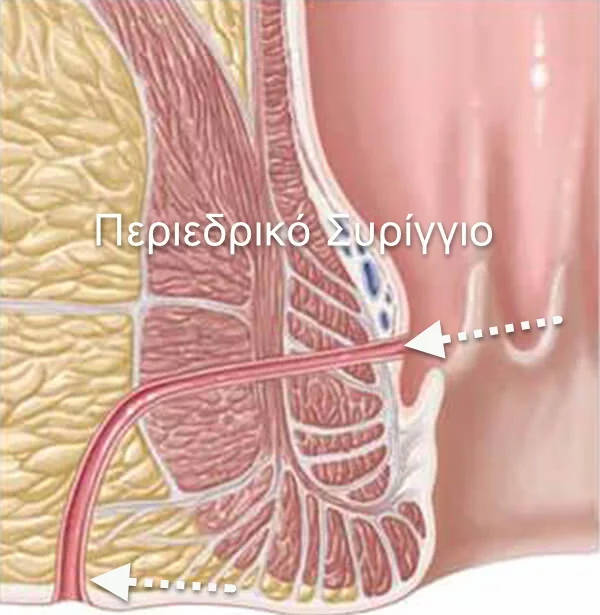

Perirectal fistula is a pathological communication between the rectal mucosa and the skin around the anus.
According to the prevailing theory, it is caused by inflammation in the Morgagni crypts located around the perimeter of the dentate line. In these crypts the anal glands excrete. Bacterial inflammation in these glands creates a septic lesion (perirectal abscess) which finds its way along the path with the least resistance, passing between, through or over the anal sphincters.
A small percentage of fistulas may be due to other conditions such as inflammatory diseases (Chron), cancer, tuberculosis, injury or surgery in the area.
The perirectal fistulas are distinguished according to their course and anatomical position in:
- Mesosphincteral
- Extrasphincteral
- Intrasphincteral
- Hypersphincteral
The most common symptom of perirectal fistula is the emission of serosanguineous, dirty fluid or pus from the orifice into the perianal skin. Pain or itching may occur less frequently.
The diagnosis is primarily clinical. When the patient comes to the doctor's orifice, we notice the outer orifice, ie a small hole in the skin around the anus. Usually orthoscopy follows which will help us to exclude other coexisting diseases and at the same time to find the inner orifice of the perirectal fistula. Finally, the diagnosis of perirectal fistula is confirmed by performing magnetic syringography or an intrarectal ultrasound that allows us to map the fistula and its relation to the sphincters.
The treatment of perirectal fistula is only surgical. The ideal is the resection or the cross-section with debridement of the fistulous pore and its subsequent healing for a second purpose. In difficult cases, the seton or Hippocrates method is applied as well as the laser with very good results.
 English
English  Ελληνικά
Ελληνικά 